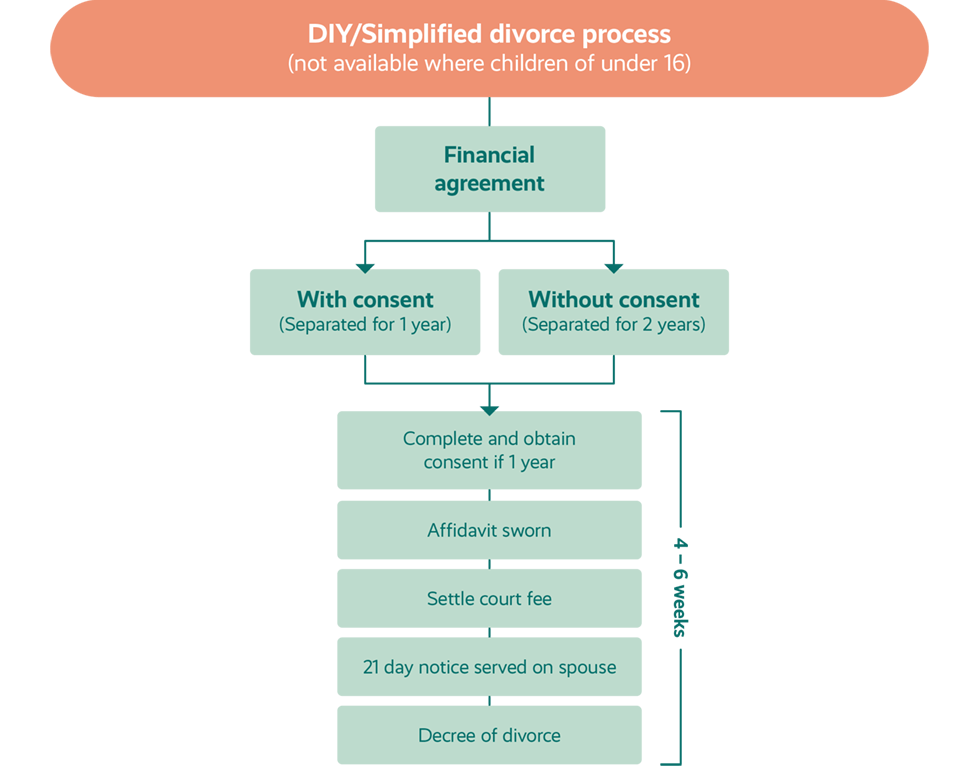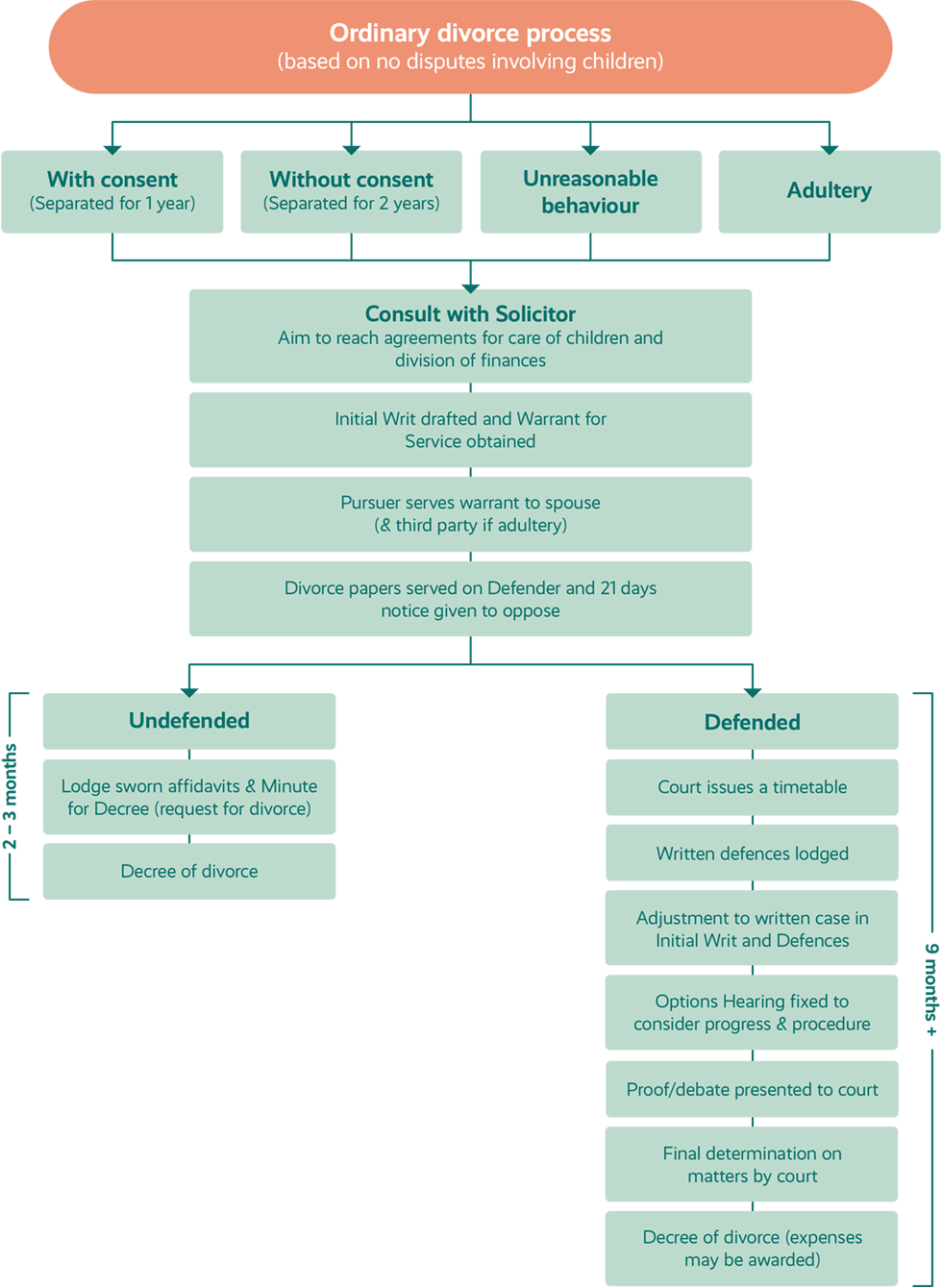
Recognised gender change of either party
A recognised gender change is established if either party is issued with an interim gender recognition certification under the Gender Recognition Act 2004.
Irretrievable breakdown of the marriage
In Scotland there are four grounds for divorce if a marriage has irretrievably broken down. These are:
Also known as the simplified procedure. You can be granted a divorce by going directly to your local sheriff court if you are able to satisfy the following criteria:
An irretrievable breakdown of your marriage based on one year separation with consent or two years separation without consent
You have no children of the marriage aged under 16
There are no outstanding financial matters to be resolved
There are no other court proceedings underway which might result in the end of your marriage or civil partnership
There are also additional requirements relating to residence which you will need to meet to use this procedure and these are different depending on whether you are raising the application in the Sheriff Court or Court of Session (find out more).
The DIY method will usually take about two months and you will need to fill in forms supplied by your local Sheriff Court (or at the Court of Session in Edinburgh) or from the Scottish Courts and Tribunals Service website.

Getting divorced using the ordinary method is more expensive than the DIY method and it can take up to six months longer in some cases. Typically, it follows the process outlined below:
Step 1: Consult a solicitor who will collect evidence to support the grounds for your divorce
Step 2: Your solicitor then draws up a document called an initial writ which is lodged in court and a copy is sent to your spouse. It sets out the grounds for the divorce and any orders you want the court to make in relation to your children, money or property. Your spouse may accept the terms of the writ and decide not to defend the case.
Step 3: The court will then ask you and a supporting witness to submit sworn statements, known as affidavits, containing evidence of the information in the initial writ. The supporting witness will usually be a friend or family member who is aware of your circumstances.
Step 4: Once the affidavits have been submitted, the court will grant the decree of divorce. This means that it is unlikely that either you or your spouse will need to appear in court.
If your spouse disagrees with any aspect of the writ and defends the action in court then the court will have to decide on the arrangements for your children, property and money. Your spouse may decide to raise their own action, called a cross action, to start divorce proceedings against you at the same time as you are pursuing your action. This will make your divorce more complicated, will increase the costs and you will need to get advice from your solicitor.

Search our
Practitioners
Download our
Brochure
How does
it work